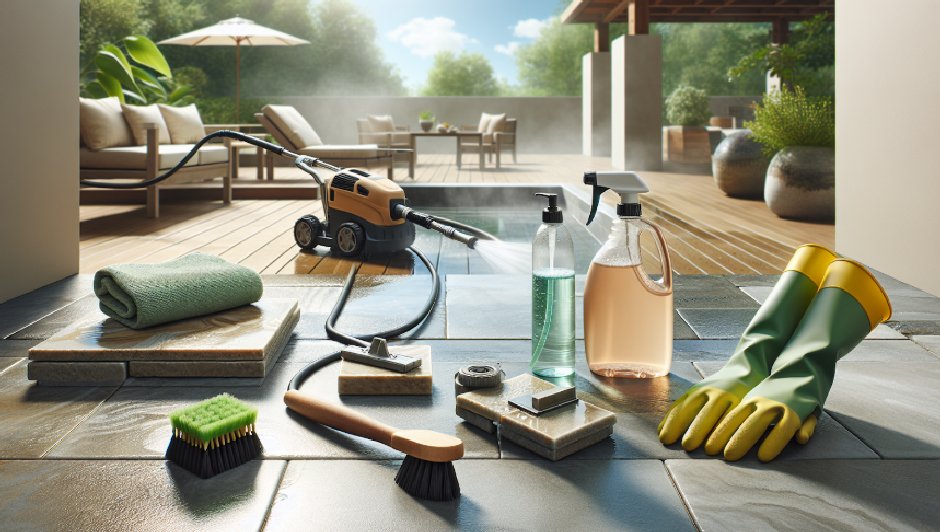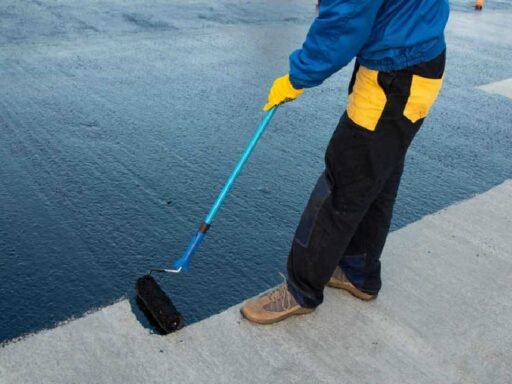Patios are the heart of leisure activities at home, especially during the warm months, but their constant exposure to the elements means they require regular cleaning. However, traditional cleaning methods often involve harsh chemicals that can harm the environment and pose health risks. The importance of eco-friendly cleaning for your patio—in essence, using products and practices that are safe for the planet and our health—cannot be overstated.
An eco-friendly approach to patio cleaning embraces methods that minimize ecological footprints while keeping your outdoor space pristine. This overview introduces a wide array of strategies, from homemade cleaners to commercial solutions and mechanical methods, each designed to maintain your patio’s splendor without sacrificing environmental considerations.
Understanding eco-friendly cleaning begins with defining it as the use of products and practices that have a reduced impact on our environment. This means avoiding toxic substances that can contaminate soil and water, and choosing biodegradable and plant-based options instead. The benefits for both the environment and our health are significant; such cleaning reduces pollutants, supports biodiversity, and lessens the chances of health issues linked to chemicals in traditional cleaners, such as respiratory problems and skin irritations.
Preparing your patio for cleaning is the first practical step. Clearing the surface of furniture, decorations, and any debris allows you to assess the condition of your patio and target areas that need more attention. This also prevents dirt from simply being moved around rather than removed during the cleaning process.
Identifying the type of patio material—be it concrete, paving stones, wood, or composite—is crucial in selecting the appropriate cleaning method. Each material has its particular characteristics and vulnerabilities to chemicals and abrasive techniques. For instance, natural stone can be sensitive to acidic solutions, while wood requires gentle cleaning to preserve its integrity and finish.
Homemade eco-friendly cleaners offer an effective and environmentally friendly alternative to harsh chemicals. A vinegar solution, created by mixing equal parts water and white vinegar, is an excellent multipurpose cleaner that can be used to break down grime on various patio surfaces. Its acidic nature makes it particularly good at handling mildew and mold.
Baking soda paste, made with baking soda and a bit of water, is another powerful natural cleaner. Its mild abrasiveness allows it to scrub away tougher stains without causing damage. Additionally, baking soda’s alkalinity helps in neutralizing foul odors and absorbing grease.
Liquid castile soap, a plant-based product, can be diluted with water to create a gentle yet effective cleaning mixture for patio furniture and surfaces. It works particularly well for general dirt and is safe for use around plants and pets, ensuring that your green cleaning does not negatively impact your garden or furry friends.
Commercial eco-friendly patio cleaner is a convenient choice for those who prefer ready-made solutions. When selecting such products, look for criteria like biodegradability, non-toxicity, and the absence of phosphates and other harmful chemicals. Certifications from environmental organizations can also guide you towards products that adhere to strict ecological standards.
Several recommended brands and products that have become synonymous with green cleaning include names like Ecover, Method, and Seventh Generation. Their patio cleaners often contain natural ingredients like essential oils and enzymes that effectively clean without leaving harmful residues.
Mechanical cleaning methods provide an alternative that requires no chemicals at all. Using a sturdy broom or brush to manually sweep and scrub your patio is an age-old technique that remains effective today. This method allows you to control the level of pressure applied, making it adaptable to a variety of patio materials.
Pressure washing should be approached with caution. While it can be eco-friendly—since it uses only water—the intense pressure can damage surfaces or mortar if not handled correctly. Always use the lowest setting that is effective and keep the nozzle at an appropriate distance from the surface.
Tackling tough stains naturally may seem daunting, but there are several time-tested techniques. Lemon juice, for instance, acts as a natural bleach and can be used to lighten stains on light-colored patio materials. Sprinkling salt on wet stains, allowing it to absorb the stain, and then scrubbing it off is another eco-friendly approach to tackling spills.
Spot cleaning with safe products, such as hydrogen peroxide for mold or mildew stains, ensures that you’re addressing the problem areas without the need to blanket your entire patio with cleaners. This targeted approach reduces the overall amount of cleaning product used, aligning with eco-friendly practices.
Maintaining your patio regularly extends its life and can reduce the need for deep cleaning sessions. Simple activities like sweeping away debris, picking up leaves, and wiping down furniture can prevent dirt buildup and spot issues before they become harder to handle.
Preventative measures, such as using rugs to protect high-traffic areas or applying sealants appropriate for your patio material, can also guard against stains and weathering. The less damage your patio sustains, the less cleaning it will require, thereby reducing the need for cleaning products and water usage.
Disposing of wastewater after cleaning is a critical aspect of eco-friendly maintenance. Rather than allowing it to run off into storm drains, eco-friendly disposal methods might involve using it to water plants or directing it into areas where it can safely soak into the ground, avoiding contamination of local waterways.
Minimizing harmful runoff is vital for protecting aquatic life and maintaining the quality of water bodies. Using biodegradable cleaners and avoiding over-watering are crucial steps in ensuring that the by-products of your patio maintenance are not detrimental to the environment.
In conclusion, adopting eco-friendly ways to clean your patio not only preserves its beauty but also ensures that you do your part in safeguarding the environment. From homemade vinegar solutions to brushing and preventive maintenance, every small step contributes to a larger cause.
Let this recap of the advantages of green cleaning resonate every time you enjoy the tranquility of your outdoor haven. We encourage you to embrace eco-friendly patio cleaner methods and practices wholeheartedly, as a reflection of your commitment to a healthier planet and a more sustainable lifestyle. Start with one change, and soon you may find that your green cleaning routine is as refreshing as a day spent lounging on your impeccably maintained, environmentally-friendly patio.





